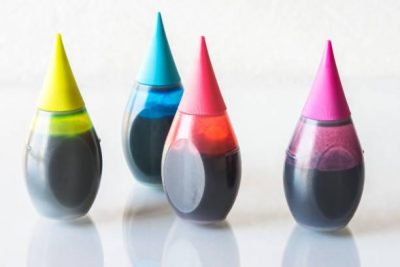Written by UConn Dietetics Student Abigail Duffy
Ever wonder where the green color in your mint-flavored toothpaste comes from? Or even the color of your cough syrup? Many people know that artificial food dyes are found in their food, snacks, and beverages, but what they may not know is that those same dyes are found in medications and cosmetics as well, changing the appearance of the product, and perhaps making it more visually appealing to the consumer.
Are food dyes safe?
The US FDA (Food and Drug Administration) states that color additives are safe when used properly2. When the use or consumption of artificial food dyes are limited, especially in children, they are not a threat to their health. The FDA does regulate the use of color additives in the United States, which means that the FDA will evaluate the safety of the color additive before being used in products given to the public. Food color additives must be labeled as “GRAS” (Generally Recognized as Safe), which means the product is shown to be safe under the conditions it will be used for by the FDA’s Office of Food Additive Safety (OFAS)1. There are strategies to keep food dyes to a low level that you and your family can follow.
Strategies to Limit Consumption of Artificial Food Dyes:4
1.Read labels
Buy foods that use natural food coloring from fruit or vegetable extracts!
 2. Go for homemade
2. Go for homemade
Make it yourself & use natural food dyes!
3. Focus on whole foods
Limit processed foods, when possible, those usually contain artificial food dyes!
4. Emphasize healthy choices for yourself and your family
Examples of Artificially Dyed Foods:5
- Instant flavored Oatmeal packets & cups
- Salad dressings
- Highly processed syrups
- Sugary sport drinks
- Cereals
Examples of Healthy Swaps:5
- Plain oatmeal with fresh toppings (fruit, vanilla, cinnamon)
- Homemade salad dressings
- Grade A pure maple syrup
- 100% fruit juice drinks
References:
- Center for Food Safety and Applied Nutrition. “Generally Recognized as Safe (GRAS).” U.S. Food and Drug Administration, FDA, https://www.fda.gov/food/food-ingredients-packaging/generally-recognized-safe-gras.
- Commissioner, Office of the. “How Safe Are Color Additives?” U.S. Food and Drug Administration, FDA, https://www.fda.gov/consumers/consumer-updates/how-safe-are-color-additives#:~:text=%22Color%20additives%20are%20very%20safe,absolute%20safety%20of%20any%20substance.
- Donahue, Wendy, and Tribune Newspapers. “Artificial Food Dyes.” Chicago Tribune, 23 Aug. 2021, https://www.chicagotribune.com/dining/ct-xpm-2011-04-06-sc-food-0401-kids-dyes-20110406-story.html.
- hollowc2. “Is Food Coloring Safe for Kids?” Cleveland Clinic, Cleveland Clinic, 9 Dec. 2022, https://health.clevelandclinic.org/is-food-coloring-safe-for-kids/.
- Serbinski, Katie. “12 Artificially Coloured Foods with Healthy Swaps.” Nature’s Path, Nature’s Path, 16 Aug. 2021, https://www.naturespath.com/en-us/blog/12-artificially-colored-foods-healthy-swaps/.
This material is funded by UDSA’s Supplemental Nutrition Assistance Program (SNAP).
This institution is an equal opportunity provider.